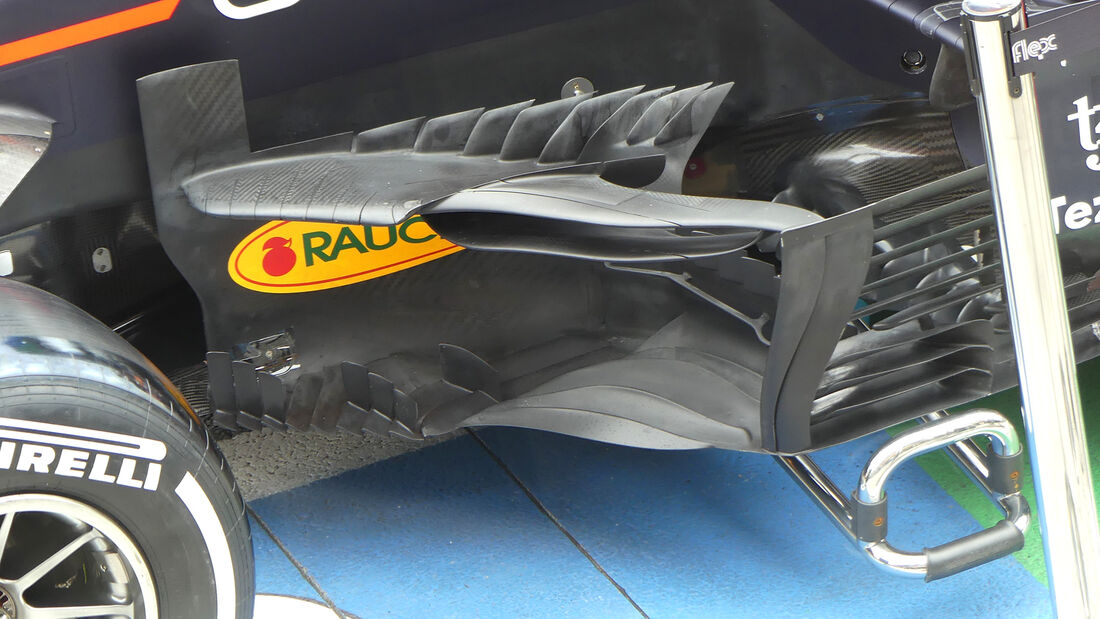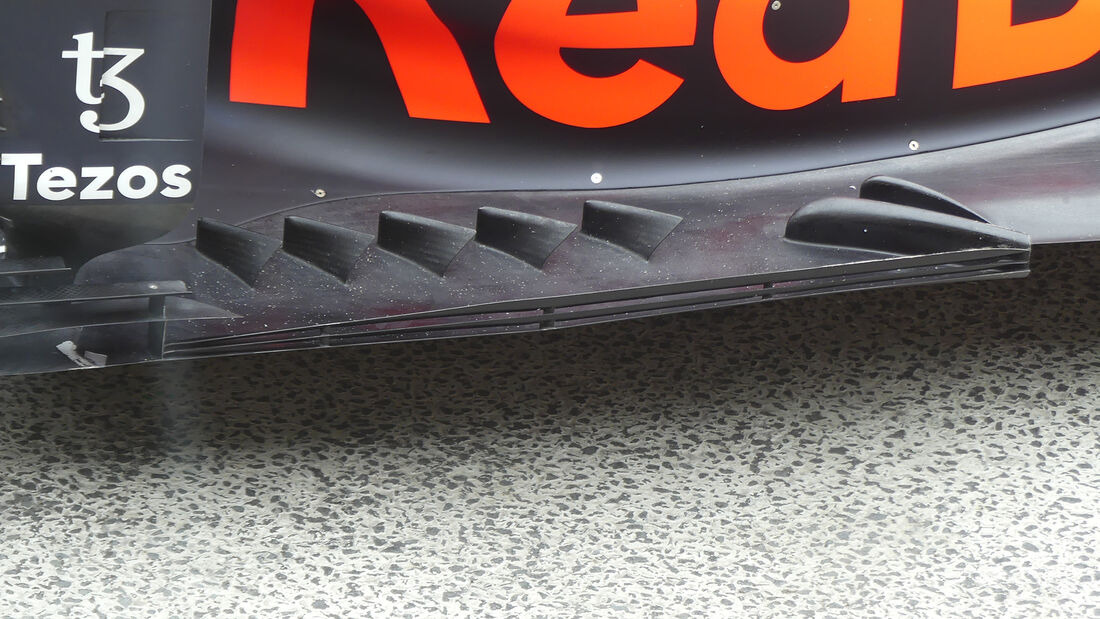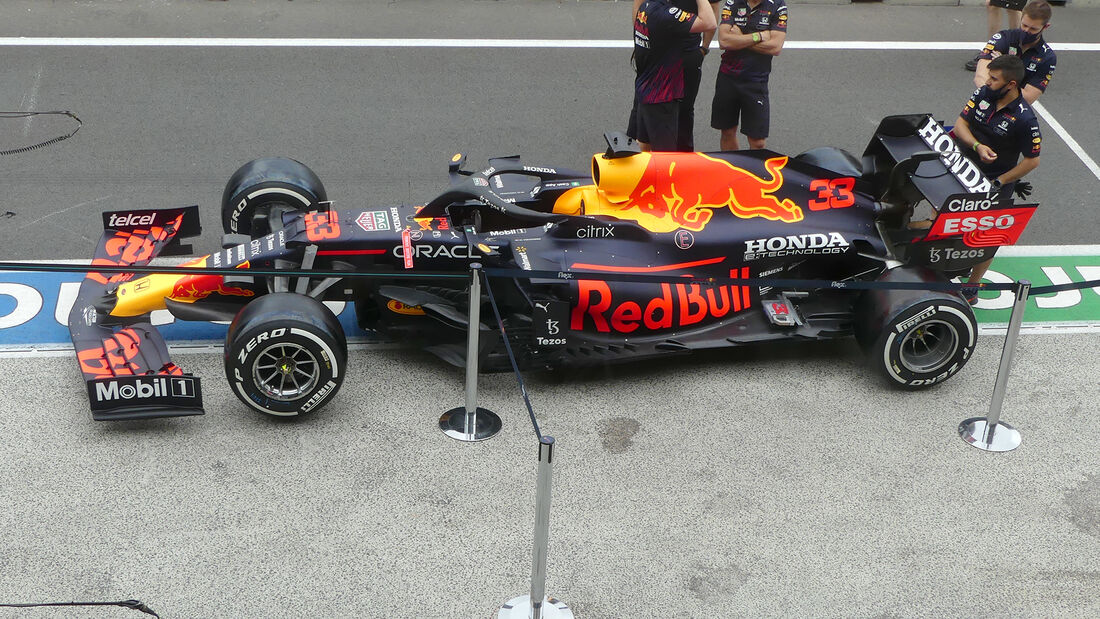Looks like they'll still be using the spoon rear wing as the starting point (via @AlbertFabrega):

Just_a_fan wrote: ↑02 Sep 2021, 13:04
The car is obviously working very well at the rear where the brake ducts and diffuser performance is probably best in the field. In fact, so good that they can't get the front to match it. If you look at the front wing, they've made the flaps larger to increase surface area to try to gain front end downforce.
If the center of pressure is too much rearwards, that still could be a problem for them. Just compare Lewis' Hungarian pole lap with Max's best (videos still up on Juzh's channel I believe), look how much minimum speed the Dutch has to sacrifice in T5 and in the last bend (probably the two most front-limited medium speed turns of the track) because of his car's unwillingness to rotate in comparison to the Merc.
Red Bull has been rocking the slim nose + cape since last season, but one conceptual difference between their car and Mercedes' that still isn't talked about a lot is their front suspension geometry. Notice how the former car's wishbones are already connected to the chassis pretty much as high as possible, but - especially the upper wishbones - are angled down significantly more to meet the uprights at lower points within the wheels...
... As I understand it, the floor of a present-day F1 car has two "focal points" or zones of downforce generation, one at the start of the diffuser throat (pushes the CoP rearwards) and a less powerful - although still very significant - one at the front leading edge (pushes the CoP forwards)... I wonder if Mercedes' front suspension (especially the almost horizontal upper wishbones) makes a better contribution to the downwash towards the leading edge of the floor, helping them to achieve a "healthier" innate CoP location, especially now with the less flexible rear wings...

















